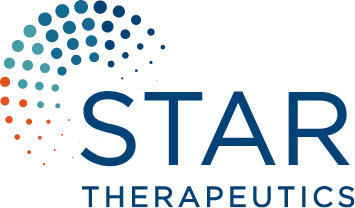
By Jennifer Boggs, BioWorld
Star Therapeutics Inc. brought on board six new investors in its oversubscribed $90 million series C round, raising the company’s total funding to more than $190 million since its founding in 2018 to advance in-house drug discovery efforts via formation of portfolio companies. Since emerging from stealth in early 2022, Star has launched two aptly named companies, Electra Therapeutics Inc. and Vega Therapeutics Inc., with plans to unveil additional ventures arising from its antibody discovery efforts.
“This really positions us to fuel our growth and build on our success,” Star CEO Adam Rosenthal told BioWorld, adding that it’s “frankly gratifying now that we’ve proved our thesis as a company.”
Sofinnova Investments led the series C, with new investors Qatar Investment Authority (QIA), Catalio Capital Management, Agent Capital, Soleus Capital and NYBC Ventures. All existing investors joined in, including Westlake Village Biopartners, Orbimed, Redmile Group, RA Capital Management, New Leaf Venture Partners, Cormorant Asset Management and Cowen Healthcare Investments.
While acknowledging that “these are interesting times” for biopharma fundraising, Rosenthal called the investor interest in Star a “testament to our value creation and homegrown innovation.”
Star operates as a self-described “innovation engine,” focused on developing antibodies against novel areas of biology and then forming portfolio companies around specific antibodies, with an aim at rare diseases in the areas of immunology and hematology. That structure – the so-called “hub-and-spoke model” – has gained traction in the industry in recent years, with companies such as Roivant Ltd. and Puretech Health plc introducing a host of companies based on in-licensed or internally developed research – or a combination of both.
For Star, the discovery work is in-house all the way. “We come up with the idea, starting with diseases … that are united by a common pathology and then coming up with the right target,” Rosenthal said. “For us, and given the team’s background, we’re very comfortable going into areas of white space” and investigating novel biology.
“What we do is we create and build out portfolio companies beneath Star, each focused on a novel area of biology,” he added. “We develop antibodies against that novel area of biology and then build a team with expertise in those areas.” The portfolio approach also “gives us flexibility to pursue different financing strategies.”
Much of Star’s team previously worked together at True North Therapeutics, where they developed an antibody, sutimlimab, targeting rare blood disorder cold agglutinin disease that attracted an $825 million buyout offer from Bioverativ in 2017 and gained U.S. FDA approval in 2022 by Sanofi SA.
Similar efforts led to the discovery of VGA-039, a potentially first-in-class antibody in phase Ia/Ib testing by Vega Therapeutics for treating von Willebrand disease (VWD), a clotting disorder. VGA-039 is designed to work by targeting protein S, a potassium-dependent glycoprotein, synthesized in the liver, which has an inhibitory effect on clot formation.
Vega made its debut at the 2022 American Society of Hematology (ASH) meeting in December with preclinical data highlighting the drug’s ability to address clot formation in VWD as well as its possibility as a universal hemostatic therapy for bleeding disorders.
And that goal of targeting multiple diseases is also a key part of Star’s strategy. Identifying a pathology or biology that can apply to multiple diseases widens the opportunity and can derisk the program as it advances along the development pathway. “That’s kind of been our area … that unified biology,” Rosenthal said.
Vega is tackling VWD first, but VGA-039 could have potential use in other congenital factor deficiencies, which are currently treated with factor replacement therapies. VGA-039 is designed to act as a co-factor of serine protease protein C and tissue factor pathway inhibitor alpha to restore thrombin generation and clot formation.
“Our team uncovered this biology, and we’re very excited by this potential,” Rosenthal said. He also pointed to VGA-039’s subcutaneous administration, which could improve compliance and reduce treatment burden. “We think subcutaneous administration has the potential to transform von Willebrand disease, similar to the way Hemlibra did for hemophilia.” Hemlibra (emicizumab), a bispecific antibody developed by Roche Holding AG and approved for hemophilia A, is self-administered subcutaneously, eliminating or reducing the need for factor VIII infusions.
A portion of the funds from the series C will go toward completion of the phase Ia/Ib trial of VGA-039. The study, which began earlier this year, is enrolling healthy volunteers in a single ascending-dose portion and expanded to include VWD patients. It will measure safety, tolerability, pharmacokinetics and pharmacodynamics.
Proceeds also will be used to identify new areas of biology to advance via new portfolio firms, Rosenthal said. “We’ll unveil those when the time is right in the foreseeable future.”
Ongoing is work at Electra Therapeutics, the first company launched by Star, which is developing antibody candidate ELA-026, targeting signal regulatory proteins (SIRP), a family of cell surface receptors on various immune cell types. Its initial indication is secondary hemophagocytic lymphohistiocytosis (sHLH), an inflammatory disease characterized by fever, hepatosplenomegaly, cytopenia and progressive multiple-organ failure and often triggered by autoimmune diseases, malignancy or infection. There are no approved treatments for sHLH. ELA-026 is in early clinical development.
As the various portfolio firms advance, South San Francisco-based Star is ready to take programs all the way to commercialization, while remaining open to other financing or business development options. “I think everything is on the table,” Rosenthal said. “We’ve had significant interest in Vega, which we only unveiled last December.
“It underscores that Star and the business have grown on many dimensions now, since we’ve been founded,” he said. The team has gone from “ideas in our head” to the clinic, “so it’s been a really fun ride.”

